The year 2018 will mark the 125th birth anniversary of P.C. Mahalanobis, the founder of the Indian Statistical Institute, whose myriad contributions to statistics will be deeply felt for a long time. This is the first of a two-part article.
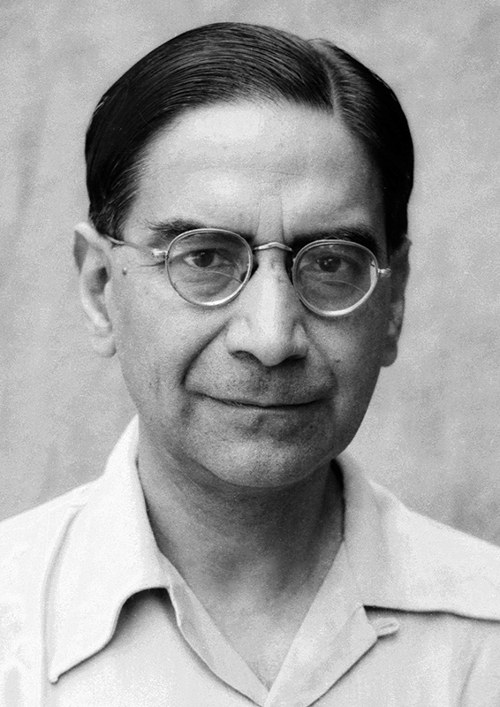
Shyambazar five-point crossing in Calcutta is one of the busiest spots in the city. It also hosts a major landmark—a statue of the freedom fighter Netaji Subhash Chandra Bose in military regalia, riding on a horse. The horse is facing east while Bose’s face is turned towards south. If one takes a public bus in the opposite direction, the north, the ride will be a very bumpy one along the pothole rich and traffic-clogged Barrackpore Trunk (B.T.) Road, which is a remnant of the British Raj in India. The conductor of the bus, while hanging off the door, keeps shouting the names of the stops. After twenty minutes or so, depending on the flow of the traffic, you are jolted by the conductor shouting “Statistical! Statistical!”, the correct pronunciation of which may surprise you. This being a major bus stop, you struggle through the crowd to extricate yourself from the bus. As you navigate through the chaos and crowd of B.T. Road, you are greeted by a seemingly majestic gate proclaiming the Indian Statistical Institute (ISI). Though manned by a number of gate-keepers, you can confidently walk through the gate with no questions asked.
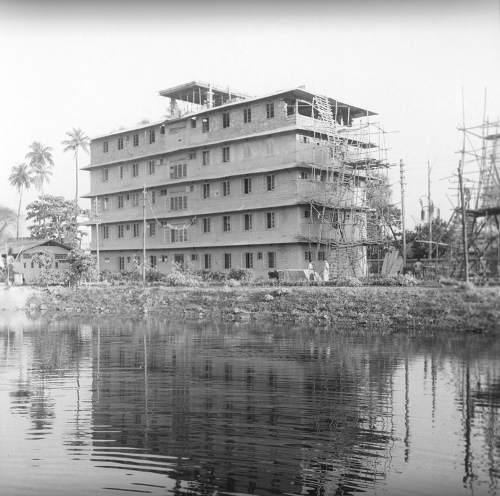
This magically transports you to a different world resembling the old Bengal countryside. You are suddenly engulfed in serenity as the cacophony of B.T. Road, and the city itself, dies out. On your left, you have a soothing view of a large pool with beautiful trees beyond it. After a few steps, you notice a histogram-shaped old structure on your right—the Fisher Building—which is the first major building of ISI. Inaugurated in 1951 by none other than Ronald Fisher, the father of modern statistics, it was originally named the Research and Training School.
“An institution,” Ralph Waldo Emerson once said, “is the lengthened shadow of one man.” For the ISI, that man is its founder Prasanta Chandra Mahalanobis, whom we refer to as PCM. The year 2018 will mark the 125th birth anniversary of PCM, who was born on 29 June 1893.
As you stroll to the other side of Fisher Building, with modern high-rises and an enchanting pond, you get an idea of PCM’s long shadow as you notice hurried students and scientists, from many parts of the world, and workers engaged in serious discussion, striving to make sense of the world. This blending of local and global, unconstrained scholarship of science with a humanist ideal, and above all, the unity in diversity of all people and disciplines that have been the strength of ISI, are all gifts of its founder.
Family Background
During the Mughal period in India, “Mahal” was an administrative unit like a district, and the person in charge of a Mahal was given the title Mahalanobis. In Persian, the word “nauvice’’ means scribe or a professional letter writer. Thus, it is likely that an ancestor of PCM was the scribe of a Mahal. PCM’s ancestral village was Panchasar in Vikrampur, a district from which many illustrious families hail. Guru Charan Mahalanobis (1833–1916), PCM’s grandfather, was a self-educated and self-made businessman who migrated to Calcutta from East Bengal (modern day Bangladesh). He established three well-known educational institutions in Calcutta—the Brahmo Boys’ School, the Brahmo Girls’ School and the City School. A similar entrepreneurial streak is visible in Prasanta Chandra when one considers not only the branches of ISI all over India but also his other initiatives such as Sankhyā, the Indian Journal of Statistics, the National Sample Survey (NSS) and the Central Statistical Organization (CSO).
PCM’s father, Prabodh Chandra (1869–1946), studied painting at the Art School of Calcutta for three years. During his years at the Art School, he became friends with Upendranath Sircar, whose daughter Nirodbasini later married Prabodh Chandra in 1891. Nirodbasini’s brother was the legendary doctor Nilratan Sircar, after whom NRS Medical College and Hospital in Calcutta is named. Along with Nilratan Sircar, Prabodh Chandra started a dealership called Carr and Mahalanobis, which specialized in sporting goods and gramophones. His dealership provided jobs to many young men at the time. Prabodh Chandra also helped others set up small businesses. This concern for society’s well-being is something one also sees in Prasanta Chandra, who had a life-long habit of helping friends and foes alike.
“An institution,” Ralph Waldo Emerson once said, “is the lengthened shadow of one man.” For the ISI, that man is its founder, Mahalanobis
Schooling and Early Career
Prasanta Chandra, the eldest of a family of two sons and four daughters, in the family house at 210 Cornwallis Street (later renamed Bidhan Sarani), Calcutta, that was built in 1883 by his grandfather, Guru Charan. Prasanta was admitted to the Brahmo Boys’ School soon after it was founded in 1904. In 1907, when Prasanta was only 14, his mother Nirodbasini passed away. In spite of the uncertainty after her death, Prasanta wrote the school-leaving examinations a few months later in 1908. He passed these exams and secured the first division. He then studied Intermediate Science (I.Sc.) (1908–1910) and B.Sc. with Physics Honours (1910–1912) at the Presidency College, Calcutta. Even at this age, Prasanta maintained a wide variety of interests ranging from archaeology and literature to astronomy and philosophy. He became somewhat indifferent to exam results, ranking eleventh in his I.Sc. exam rather than a much higher position that he was quite capable of. In the B.Sc. Honours final too, he missed getting first class by only eight marks.
Prasanta joined Cambridge University in 1913. During his stay there, Mahalanobis met the famous Indian mathematician Srinivasa Ramanujan and became quite friendly with the mathematical genius. This early friendship with Ramanujan and his mathematical training at Cambridge may have left in him a lifelong respect for the beauty of mathematics and its relevance for the world of applications in which Mahalanobis felt most at home.
A year after joining Cambridge, Prasanta attempted both parts of the Cambridge Tripos examinations in 1914 and 1915 and cleared them. This was considered a feat since most students took four years to clear these exams. Prasanta did not perform well in the Part I exam, which was in mathematics. However, in the Part II exam in physics, he obtained the first rank. It seems that his performance was key to his obtaining a scholarship to work under two eminent Cambridge scientists, C.T.R. Wilson (1869–1958) and Sir J.J. Thomson (1856–1940), who were at the Cavendish Laboratory. Mahalanobis later visited India in 1915 on a break. This would alter the course of his life, as World War I, which began in 1914, intensified to a point where he was unable to return to Cambridge.
Mahalanobis joined as a temporary Assistant Professor at the physics department of Presidency College, Calcutta. He obtained the rank of a full Professor in 1922, and remained part of the faculty there till 1948. While still at Presidency College, he joined the Alipore Observatory in Calcutta, where he was the Director of Meteorology from 1922 to 1926. His decision to join Alipore Observatory was upon the persuasion of the noted statistician Sir Gilbert Walker (1868–1958), who was then the Director General of Observatories in India. From 1945 onwards, Mahalanobis became the Principal of Presidency College, and was made Professor Emeritus after his retirement from the college.
Marriage
Prasanta Chandra got married on 27 February 1923 to Nirmal Kumari, daughter of Heramba Maitra (1857–1938), Principal of City College, Calcutta, and a leading member of the Sadharan Brahmo Samaj. The marriage was initially opposed by Rani’s parents, especially her father. But eventually, observing the sincerity of their devotion to each other, he told Rani, as Nirmal Kumari was called, that they had his consent. However, he told her that neither he nor her mother would be present at the wedding. In the absence of her father, it was decided that Dr. Nilratan Sircar, who was Prasanta’s maternal uncle, would take Rani’s father’s place at the ceremony. The wedding took place at Dr. Sircar’s residence at 7 Short Street, Calcutta.
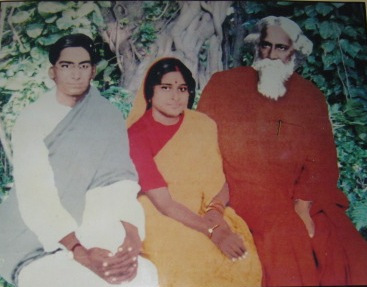
The wedding service was solemnized according to Brahmo marriage rites by Satish Chandra Chakravarti (1865–1948), a revered minister of the Sadharan Brahmo Samaj. The same day, the premiere of Rabindranath Tagore’s latest opera Basanta (The Spring) took place at the Calcutta University Institute auditorium. After the performance, Tagore and his entire troupe attended the wedding. After the wedding ceremony was over, Tagore came and sat in front of Prasanta and Rani. To the delight of those present, Tagore spontaneously began singing songs of Spring which were sung earlier during the evening in the opera.
The next day, when Prasanta and Rani went to Tagore to pay their respect, the poet presented the bound original manuscript of all songs of Basanta as a wedding gift, telling them that as the premiere of the opera had taken place on their wedding day, they alone had right to the manuscript. On the first page, Tagore wrote a dedication in Bengali:
Prasanta, Rani
Tomader eyi milon basantay
dilen Kobi basanta gan aani
Sunder prem sajuk ananday
poruk golayay soorer malakhani
Prasanta, Rani
In this spring of your union
the poet evokes the songs of Spring;
Let your love dress in joy
and wear the garland of melody.
It should be noted that the wedding day, 27 February, was close to the middle of the Bengali month Falgun, the official first month of the spring season. Their companionship lasted till Prasanta’s death on 28 June 1972. Rani, a strong-willed person, was a devoted wife. Rani took up all the responsibilities of running the household by looking after the continuous stream of Indian and foreign guests to ISI and also accompanying Prasanta on his travels. In a way, she relieved him from the mundane duties of daily life so that he could pursue freely his academic research and institution building activities.
A Chance Introduction to Statistics
After clearing the Part II Tripos Examination, Mahalanobis used to spend a good deal of time in the Cambridge library looking up various books and journals. One morning his tutor W.H. Macaulay found him there and showed him some bound volumes of the journal Biometrika, presented to the library by the editor, Karl Pearson, an Honorary Fellow of King’s College, Cambridge. Mahalanobis got so interested in the journal that he bought a complete set of Biometrika volumes and started reading them on the ship during his journey back to India. He continued to study and work out exercises on his own during his spare time after arrival in Calcutta. Thus it was Macaulay who first drew Mahalanobis’ attention to statistics, which led him to take up the subject for serious study. This was a turning point in his scientific career as his interest began to shift to statistics, referred to by Sir Ronald Fisher later as the key technology of the 20th century.
In 1917, Acharya Brajendranath Seal (1864–1938), who was at that time the chairman of the committee for examination reforms in Calcutta University, took Mahalanobis’ help for a statistical analysis of its examination results. This was possibly the first important work in statistics in a modern sense to be undertaken in India. Seal guided Mahalanobis and let him have some hands-on experience with real statistical work. Unfortunately, no records of this work have survived except for some correspondence between Seal and Mahalanobis. However, from 1919 onwards, there is a fairly complete record of Mahalanobis’ work.
Foundation and Progress of ISI
During the 1920s, Mahalanobis gradually set up a Statistical Laboratory in the physics department of Presidency College, where he either carried out projects or research in statistics alongside his physics teaching. In 1928, the Statistical Laboratory began functioning in the Baker Laboratory, which was also a part of the Presidency College physics department.
It was with the encouragement of two individuals—Subhendu Sekhar Bose (1906–1938) and Harish Chandra Sinha—that Mahalanobis wrote to several people about the possibility of starting a statistical society. Subhendu Sekhar was a brilliant student of physics who followed Mahalanobis into statistics while Sinha was a professor of economics at Calcutta University who would later play an active role in the founding of ISI. The responses that Mahalanobis received were favourable; in July 1931, he received a yearly grant of Rs. 2,500 for three years from the Imperial Council of Agricultural Research (ICAR) for studies related to agriculture. Subhendu Sekhar was offered the senior-most position of Statistical Assistant and would go on to make numerous contributions to statistics before his untimely death in 1938.
The Indian Statistical Institute was founded on 17 December 1931, and was formally recognized as a registered society on 28 April 1932. The Institute shared space with the Baker Laboratory until 1951 when it moved to its new campus in Baranagar, a suburb of Calcutta. By 1953 the Statistical Laboratory seems to have merged fully with the Institute, giving it a dual role as a society as well as a research and training institute.
Aside from Subhendu Sekhar Bose, Mahalanobis was helped with statistical work by another early associate, Sudhir Kumar Banerjee, who was not as academically qualified as Subhendu Sekhar but had the reputation of having great organizational capabilities. He served Mahalanobis as personal assistant for some time. Jitendra Mohan Sengupta (1906–1973), also called Sankar Babu, was an early recruit who would become well-known for his innovations in survey sampling. Purnendu Kumar Bose (1916–1993), the younger brother of Subhendu Sekhar, also became closely associated with ISI in 1939.
In the 1930s, Mahalanobis was joined by two outstanding mathematicians, Raj Chandra Bose (1901–1987) and Samarendra Nath Roy (1906–1964). Bose was a pure mathematician who had worked with Syamadas Mukhopadhyaya before joining Mahalanobis. One of his famous contributions to mathematics featured on the front page of the New York Times on 25 April 1959.1 Together with E.T. Parker (1926–1991), Professor of Mathematics, University of Illinois at Urbana-Champaign, and S.S. Shrikhande (1917–~), who was Bose’s student at the University of North Carolina, Chapel Hill, he had disproved the great mathematician Leonhard Euler’s conjecture on orthogonal latin squares. Shrikhande later became the founder-director of the Centre of Advanced Study in Mathematics, Mumbai.
Roy had a brilliant career in applied mathematics; he had both theoretical and practical interests, and, like Subhendu Sekhar, also helped Mahalanobis with the administration of the fledgling institute. Mahalanobis was not only a great statistician, but could also inspire others, young and old alike, to join him with passion and almost everlasting loyalty in these endeavours. In time, the institution he founded became an important centre for both research and teaching.
Mahalanobis was not only a great statistician, but could also inspire others, young and old alike, to join him with passion and almost everlasting loyalty in these endeavours
Among the prominent people who joined ISI in later years were K.R. Nair (1910–1993), C.R. Rao (1920–), Ramkrishna Mukherjea (1919–2015), Anil Bhattacharya (1915–1996) and Ajit Dasgupta (1925–2002). Nair contributed to the design of experiments. Mukherjea made outstanding contributions to both the theory and the fieldwork of quantitative sociology that helped start the subject in India. Bhattacharya made pioneering contributions to the characterization of bivariate normal distributions in addition to his work on Bhattacharya bounds and the Bhattacharya–Hellinger distance. Dasgupta made outstanding contributions to the field of demography.
C.R. Rao is arguably the most famous living statistician today. Rao, who joined ISI in 1941, was enrolled in Calcutta University’s M.Sc. programme in statistics in the same year. He started, in 1945, a new theory of optimal estimation from small samples with the discovery of two results—the Cramer–Rao inequality, also called the Information Inequality, and the Rao–Blackwell theorem. Any first graduate course in statistical inference will be incomplete without these two results. Rao also made a major contribution to the combinatorial theory of designs by extending the notion of orthogonal latin squares through the notion of orthogonal arrays.
The years 1931–1947 were marked by very important theoretical and practical work on statistics at ISI, establishing it as a school of statistics comparable to the best centres in the world. Much of its work appeared in Sankhyā, the Indian Journal of Statistics, which began in 1933 with Mahalanobis as its founding editor. In this endeavour he was also supported morally by the poet Rabindranath Tagore, who even wrote a poem for one of the early issues of Sankhyā, in 1935 (Volume 2, p.1). It remains to this day a journal with an acclaimed international reputation. From a scientific point of view, Sankhyā is perhaps Mahalanobis’ greatest contribution to Indian science.
Despite these successes, ISI struggled financially in its early years, though the annual grant to the Institute increased to Rs. 7,500 in 1935, and the Government of Bengal provided a grant of Rs. 5,000 in 1936. The Institute’s finances improved slightly in 1936 when Sir John Russel, a renowned British agriculturist who was the director of the Rothamstead Experimental Station, one of the oldest agricultural research institutions in the world, visited the Institute that year. A year later, in 1937, the then Viceroy of India, His Excellency the Marquis of Linlithgow, also visited the Institute. C.D. Deshmukh (1896–1982), who later served ISI as its president for two decades (1944–1964), summarized the financial struggles of the Institute at the time:
After a gap of 17 years, I met him in Simla trying to raise some small financial support for the Institute, measured in terms of only 4-digit figures—and even that he found an uphill task, so abysmal was the ignorance in regard to and apathy towards statistics at that time even in the highest places, namely, the finance department of the Government of India and in the office of the Economic Advisor of the Central Government.
Following a slight improvement in funding upon Deshmukh’s appointment as the Governor of the Reserve Bank of India in 1943, it was only after India’s independence in 1947 that the funding improved considerably. However, with this increased funding came a struggle with the government over the Institute’s autonomy. The government had even offered to fully fund ISI under the condition that it would give up its own projects and its applied work. It urged them to focus purely on academic work like other research institutes in India did at the time. But Mahalanobis valued both the applied and theoretical aspects of statistics. His response was a characteristic one—he offered that the government take control of ISI, but said that he would then resign and start a new institute with the original goals of ISI. Fortunately, the government changed its mind.
Mahalanobis valued both the applied and theoretical aspects of statistics
With the passing of the ISI Act in 1959 by the Indian government, the Institute was recognized as an Institution of National Importance. The Act promised full financial support with accountability, but in a manner that did not infringe on its academic autonomy. The first Prime Minister of India, Jawaharlal Nehru, played a key role in the passing of this Act and his speeches in both houses of Parliament are considered to be a memorable defence of the academic freedom of scientists and research institutes.
Contribution to Statistics and Related Fields
There were many notable projects that were carried out at the Institute in its early years. The Hirakud Dam, located on the Mahanadi river, is one such project. The river delta area in the state of Orissa that arises from the Mahanadi, Brahmini and Baitarani rivers was a flood prone area. After a severe flood of the Brahmini River in 1926, Mahalanobis was requested to suggest a remedy. An expert committee of engineers suggested that a catastrophic rise had taken place in the riverbed and recommended increasing the height of the embankments. However, Mahalanobis argued that no such change in the riverbed had taken place. He reached this conclusion after a study of 60 years of data, during which he developed original ideas that were later re-discovered. Mahalanobis concluded that constructing dams on the upper reaches of the river would be an effective strategy for flood control. His calculations during this study were the basis of the hydroelectric project on the Mahanadi river. When the project was completed in 1957, the Chief Minister of Orissa, Nityananda Kanungo, wrote to Mahalanobis paying him glowing tribute.
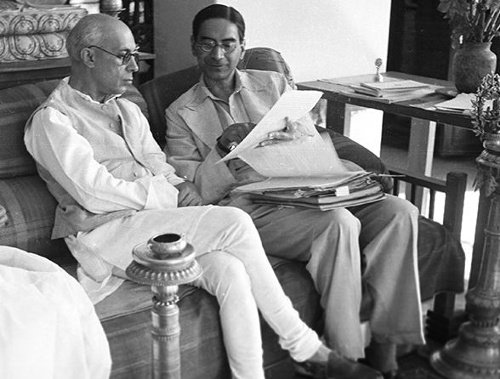
Yet another famous project undertaken during the 1930s, which is often referred to even today, was a survey that estimated the total jute crop for a particular year in the state of Bengal. This led to a surprising instance at the time—the survey-based estimate of the jute crop turned out to be more accurate than a census-based estimate. Mahalanobis had thus shown that, at least in developing countries such as India which are characterized by heterogeneity and a paucity of well-qualified staff, surveys are not only cheaper and quicker than a census, but also more accurate. On the basis of these beliefs, the National Sample Survey (NSS) was created in 1950. In the years since, it has amply justified its existence as a source of reliable data on India.
The ISI undertook many other innovative surveys during this period. These surveys led to novel methods, theories and raised some fundamental questions in survey sampling. In a tribute2 to Mahalanobis’ work, Peter Hall (1951–2016) hailed the method of “interpenetrating” sub-sampling that Mahalanobis introduced in 19403 as a precursor to the popular bootstrap technique. This is a technique that allows one to calculate the error in a statistical estimate from a given set of measurements by re-calculating the estimate on multiple sub-samples of the same set. One of Mahalanobis’ most important and comprehensive papers, “On Large-Scale Sample Surveys”, published in the Philosophical Transactions of the Royal Society (1944),4 is generally believed to be the paper that earned him the honour of Fellow of the Royal Society.
In his 1944 and 1946 papers, Mahalanobis introduced a spatial model of correlated yields of crop in a field, and used this for selecting sampling units. In a thorough discussion full of many insights, Hall pointed out that Mahalanobis’ discussion of the properties of block-based sampling anticipated modern moving block methods for spatial and time-series data.
In Mahalanobis’ 1946 paper,5 one sees the notion of an optimal sample size for a survey where the cost of the survey is minimized when the variance of the sample estimates is kept fixed. Hall noted that Mahalanobis was aware of such a trade-off between cost and variance when the size of a sampling block was varied. He felt it was like the modern trade-off between bias and variance when a smoothing parameter, such as block size, is chosen optimally. This notion of minimizing cost in a complex practical problem has been hailed as an early example of operations research.
In a tribute to Mahalanobis’ work, Peter Hall hailed the method of “interpenetrating” sub-sampling that Mahalanobis introduced in 1940 as a precursor to the popular bootstrap technique
Among Mahalanobis’ most well-known contributions are his applied and theoretical papers relating to the D^2-statistic. Nelson Annandale (1876–1924), Director, Zoological and Anthropological Survey of India, had raised the following questions: How are the Anglo-Indians of Calcutta related to different caste groups of Bengal? Do they show more affinity with the “upper” castes than with the “lower” castes? This study involved the analysis of anthropometric measurements of Anglo-Indians and the “races” in Bengal. In a paper titled “Analysis of Race Mixture in Bengal”,6 Mahalanobis proceeded to study what became the central theme of the paper, namely, “the geographical and social resemblances shown by the typical Bengali castes”. He introduced a distance between the anthropometric measurements taken from a pair of castes, the so-called Mahalanobis distance or the Mahalanobis D^2. He gave reasons as to why he preferred this distance instead of a similar coefficient of Karl Pearson’s. The formula for D^2 did not yet take into account the correlation between the variables measured, which he took into account in a later paper in 1936.7
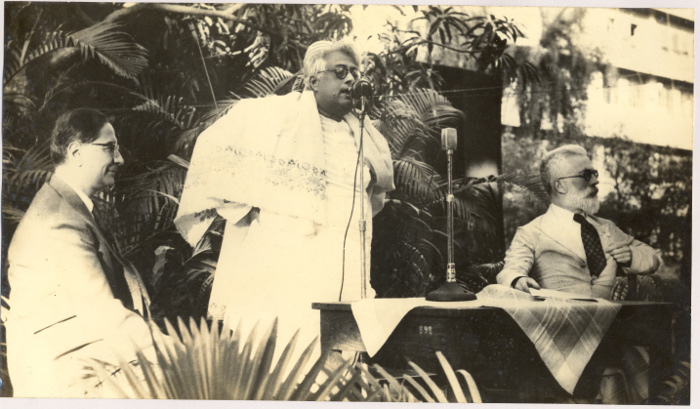
There were important contributions to the use of D^2 throughout the 1930s and 1940s. It remains one of the major tools in problems of classification and cluster analysis, and continues to be applied in many problems even today. There is evidence8 that Pearson expressed reservations about the D^2 statistic and rebuffed Mahalanobis. Yet, as subsequent theory and applications have shown, if Mahalanobis had done nothing else but this, he would still have been a famous statistician.
Mahalanobis also contributed to the establishment of university degrees in statistics as a discipline. The first ever M.Sc. degree programme in statistics in India, and probably the world, was started by him at Calcutta University in 1941. Mahalanobis was the head of the university’s department of statistics while other faculty members were R.C. Bose, S.N. Roy and K.R. Nair, who as stated earlier, joined ISI in the years that followed. This department produced many outstanding students and became a role model for subsequent statistics departments in India. The whole gamut of applied and theoretical work at ISI in the 1940s and 50s were focused on pioneering contributions in sample surveys, the design and analysis of experiments, multivariate analysis and inference, applications leading to new theory, and theory justifying new applications.
More than a leader, more than a great institution-builder, Mahalanobis remains India’s greatest applied statistician
Mahalanobis’ leadership in all matters was very evident in the 1930s itself. In the 1940s, his intellectual and administrative leadership was shared by others, notably by Bose, Roy and the young C.R. Rao. More than a leader, more than a great institution-builder, Mahalanobis remains India’s greatest applied statistician. His philosophical and lofty humanist concerns, in science as well as in day-to-day life, also sets him apart from others of his time. Under his leadership, it is also possible that ISI would have made novel digital computers in India had the First Review Committee of ISI not stopped this line of research work in computer hardware. A joint effort with Jadavpur University had already produced an indigenous computer.
The ISI Logo

An official document regarding the choice of ISI’s logo hasn’t yet been found. The motto written in Sanskrit, Bhinneṣvaikyasya Darśanam, or “Unity in Diversity”, effectively captures the true spirit of ISI. As noted earlier, Mahalanobis had interests in a wide variety of fields. He wanted statistics to be a key technology and be applied to a myriad of disciplines. In its heyday, at one stage, ISI had many active units, including ones on Economics, Mathematical Statistics, Data Processing, Demography, Operations Research, Sociology, Geology, Biology and Crop Science, Biometry, Human Genetics, Psychometry, Anthropometry, Haematology, Regional Survey, Flood Research, Historical Research, Linguistics and Phonetics, and even a self-supporting unit called Kalyansri with expenses met from the sales of household handcrafts.
The Bengal Famine
Mahalanobis’ report on the Bengal famine of 1943 is an important testimony to his commitment to a social cause. This was one of the worst famines during the British period. The streets of Calcutta were filled with helpless, starving people of all ages begging, not for food, but merely for starch water. It is largely felt that this was a man-made disaster because the shortage of grains was aggravated by the fall of Burma, one of the major suppliers of rice. It was also compounded by the necessity to procure cereals for the British army on a large scale, on top of which there was hoarding and black marketeering by the big farmers and rice traders. Unnoticed by the government, economic security had been diminishing steadily. One is not suggesting here that the government of the day was responsible for intentionally bringing about a famine, but it is hard not to feel that colonialism was responsible for the very passive role played by the government, even when such a catastrophe was clearly imminent. Only an alien, colonial government, not accountable to the Indian people, could watch helplessly. The unprepared government did not even make a proper assessment of the disaster. An eminent anthropologist, Kamala Prasad Chattopadhyay (1897–1963), sought the help of Mahalanobis and ISI to assess what had happened as a record for posterity.
Mahalanobis, Ramkrishna Mukherjea and Ambika Ghosh published a report in Sankhyā (1946).9 Some funding came from the Government of Bengal for the survey. The report told a terrible tale. Based on this report, Mahalanobis read a short paper, “The Bengal Famine: The Background and Basic Facts’’,10 a couple of months later at a meeting of the East India Association at the Royal Society premises in London. The Earl of Munster was in the Chair. Mahalanobis presented a very careful report and expressed no sentiments, nor did he condemn. He let the figures speak for themselves:
… about half a million had become destitutes under war and famine conditions in Bengal.… The chief cause of destitution was death of earning members of the family, and, next in importance, sickness or unemployment of the earners. Compared to the age distribution of destitutes in January, 1943, before the famine, the largest proportion of new destitutes had come during the famine period from younger age groups. The proportion of destitute women was greater than destitute men, especially in the age groups 15 to 50 years.
“The famine of 1943,” he went on to conclude, “was thus not an accident like an earthquake or a flood, but the culmination of economic changes which were going on even in normal times.”
Epilogue

The Indian Statistical Institute came into existence from one man’s vision regarding the future of statistics in India and elsewhere, and was ably supported by the emergence of a band of dedicated, brilliant young workers who came to share his dream. Giving material form to a dream is an arduous task under the best of circumstances; it must have been a particularly difficult one in a colonial setup. Mahalanobis was fortunate to receive support not only from one of the greatest statisticians, Sir Ronald Fisher, but also from several British and Indian administrators, especially his old friend C.D. Deshmukh. The solution to the Institute’s funding problems as well as an assurance of its future came only after Independence. Again, Mahalanobis was fortunate in that India’s first Prime Minister, Pandit Jawaharlal Nehru, had a strong belief in the importance of science and technology in the development of an independent India.
It is no wonder that many in India and elsewhere think of the 1950s and 1960s, the first two decades after Independence, as a flowering of the Institute, possibly its golden age. Colonialism is both political and cultural. There is no mystery surrounding Mahalanobis’, and hence the Institutes’, strategy against cultural colonialism. It was a mentality of fierce independence, of avoiding imitation, of the search for excellence in a national milieu, along with open friendship to all, a sense of equality and a celebration of diversity. Even now, if one sits at the Amrapali chatal or balcony where Mahalanobis used to meet scientists and other workers of the Institute, and looks out at the pond and the trees beyond, and if it is the month of July and raining, one can experience the beauty of rural Bengal. In 2007, the Government of India decided to acknowledge the immense contribution of Mahalanobis, the pioneer of statistics education and the architect of economic planning in India, by celebrating his birthday, 29 June, as the National Statistics Day every year. The idea was to create awareness among the people of India, especially the youth, about the field of statistics and its crucial role in the development of the country. The ISI will hold a year-long celebration to pay homage to its founder and a visionary of extraordinary dimensions on his 125th birth anniversary next year, 2018. The celebration was inaugurated by the President of India Pranab Mukherjee on 29 June 2017 in a colourful function in the beautiful Amrakunja (mango-grove) of the Institute, and the year-long events will culminate in a ceremony on 29 June 2018.
Mahalanobis’ birthday, 29 June, is celebrated as the National Statistics Day every year since 2007
In our Prologue we quoted Emerson saying that an institution is the shadow of one man. Now in the Epilogue, let us borrow a few lines from Tagore to pay tribute to Prasanta Chandra Mahalanobis in the 125th year of his birth:
“You are greater than your achievements. The chariot of your life leaves your achievements behind, time after time. That’s why your signature remains—but you are gone.” The myriad contributions of Mahalanobis to statistics will be deeply felt for a very long time by its practitioners all over the world.
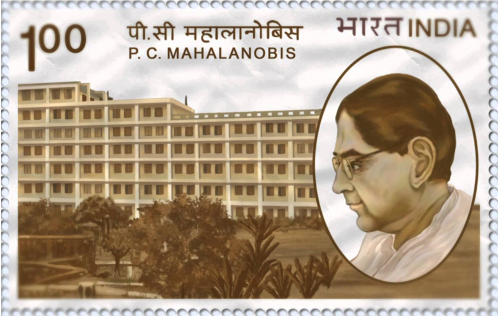
acknowledgements Much of this article is based on an essay by J.K. Ghosh, P. Maiti and A.K. Bera, “History of the Indian Statistical Institute. Numbers and Beyond (1931–1947)”, which is a chapter (pp. 1013–1056) in the book Science and Modern India: An Industrial History, 1784–1947, edited by U. Das Gupta. This book is published in the series Project of History of Indian Science, Philosophy and Culture, Centre for Studies in Civilization, MHRD, Government of India, 2011. References pertinent to this article can also be found in the above essay.
We would like to thank C.S. Aravinda for inviting us to make this contribution. We are most grateful to the Contributing Editor Vishaka Datta for suggesting changes that greatly improved the exposition. Our thanks also go to Nibedita Ganguly, In-Charge, Library of PCM Memorial Museum & Archives, for providing us a rare of photo of ISI during the construction stage; and to her and Amartya Kumar Dutta for providing us with Mahalanobis’ editorial that appeared in the inaugural issue of Sankhyā (the first page of which is reproduced at the end of this issue of Bhāvanā). We are also thankful to Sreoshi Banerjee, Saraswata Chaudhury, Osman Dogan and Malabika Koley for encouragement, comments and suggestions. All omissions and misreadings are ours.
Footnotes
- John A. Osmundsen. “Major Mathematical Conjecture Propounded 177 Years Ago is Disproved; 3 Mathematicians Solve Old Puzzle”. The New York Times. 26 April 1959. ↩
- P. Hall. A Short Prehistory of the Bootstrap. Statistical Science. 2003. 18(2): 158–167. ↩
- P.C. Mahalanobis. Annual Review: Indian Statistical Conference. pp. 130–133. ↩
- P.C. Mahalanobis. On Large-Scale Sample Surveys. Phil. Trans. of the Royal Society B: Bio. Sc. 1944. 231(584): 329–451. doi10.1098/rstb.1944.0002. ↩
- P.C. Mahalanobis. Sample Surveys of Crop Yields in India. Sankhyā. 1946. 7(3): 269–280. ↩
- P.C. Mahalanobis. Analysis of Race-Mixture in Bengal. 1925. Indian Science Congress. ↩
- P.C. Mahalanobis. On the Generalised Distance in Statistics. Proc. Nat. Inst. Sci. Ind. 1936. 2(1): 49–55. ↩
- Karl Pearson’s letter to Mahalanobis in the ISI collection and Mahalanobis’ letter to Fisher in the Nehru Memorial Museum and Library collection. ↩
- P.C. Mahalanobis, R. Mukherjea and A. Ghosh. A Sample Survey of After-Effects of the Bengal Famine of 1943. Sankhyā. 1946. 7: 337–400. ↩
- P.C. Mahalanobis. The Bengal Famine: The Background and Basic Facts. 1946. East and West Ltd. Publishers. ↩
